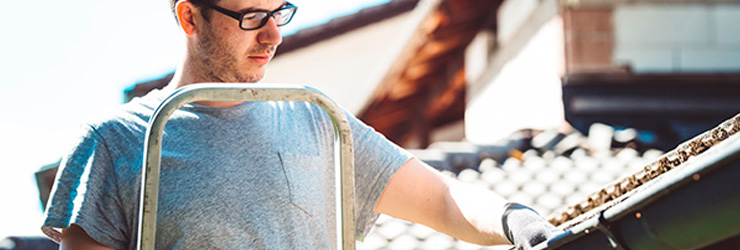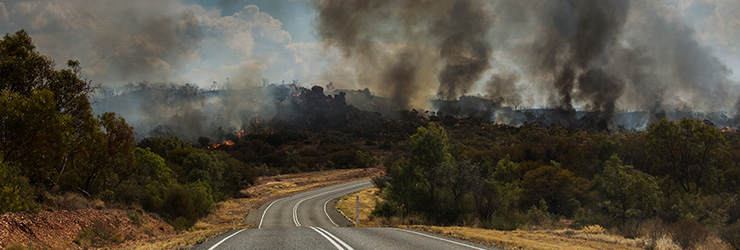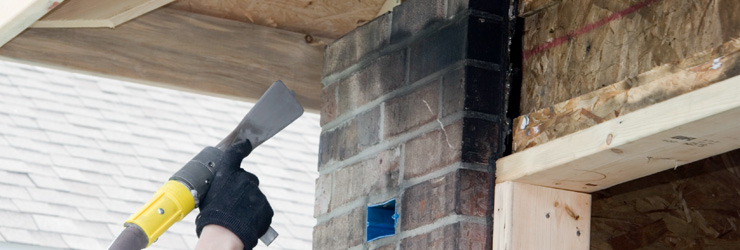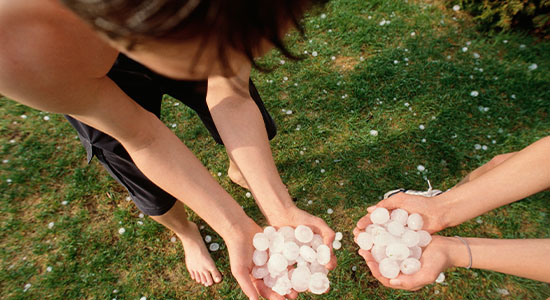Stay connected and alert
Follow key guidance from authorities
Stay vigilant
Listen to updates
Preparing for a bushfire
Preparing your home or car can not only help reduce damage but help minimise the financial and emotional impact of bushfires.
At Allianz, we’ve been helping Australians prepare for, and get back on their feet after, adverse events for over 100 years. We offer cover for a range of insured events such as storms and cyclones.
Please note, a 72-hour exclusion period may apply. For full details about what is and isn’t covered, check your, Product Disclosure Statement (PDS), Policy Schedule or Certificate of Insurance.
-
Precautions you can take
-
Emergency action plan
-
Emergency kit checklist
Precautions you can take
Around the house
- Clear leaves from gutters, roofs, and downpipes; mow your lawn; and trim low-lying branches around your home
- Fit steel wire mesh screens to windows, doors, and vents
- Seal gaps in external cladding on the roof and walls
- Close off open areas under decks and floors
- Make sure the pressure relief valves of LPG cylinders installed in your home face outwards
- Consider keeping valuables items and documents in a fire-resistant safe or metal cabinet
- To assist with potential future claims, take photos of your assets
Around the yard
- Tidy your back yard and move flammable material such as piles of wood, paper, boxes, crates, and garden furniture away from your home
- Make sure garden hoses are long enough to reach the perimeter of your property
- If you plant trees and shrubs around your home, choose those that have a lower oil content – they’re less likely to catch fire
- If you have a swimming pool or water tank, consider using a portable pump that will help you fight the fire
Emergency action plan
What to include in your home emergency plan
- What role each family member should take in an emergency
- Where you and your family will go if you have to evacuate
- A list of emergency contact numbers and key contacts like the SES, 000, local hospital, gas, and electricity
- How you will contact one another if separated
- What arrangements you’ll make for your pets to make sure they’re safe with food and water
- How and where:
- you turn off power, gas, and water supplies
- valuables and important documents are stored
- your household emergency kit is stored
- What you’ll do to reduce damage to your home or contents
- You may want to digitise and store your photos on a cloud service just in case
- Where you’ll shelter or where to go if you need to self-evacuate
Emergency kit checklist
- In a bushfire, there’s a chance you’ll be alone for up to three days – so make sure your emergency kit will sustain you and your household. Prepare for disruption to power and water supplies, unreliable communication methods, injury, and dangerous elements.
What to include in your home emergency kit
- A battery-operated radio with spare batteries
- A torch with spare batteries, candles, and waterproof matches
- Three days of non-perishable foods and a can opener
- 10 litres of bottled water per person
- A first aid kit and manual with any essential medicines
- A change of warm clothes for each person and closed-in shoes
- Blankets or sleeping bags
- Toilet paper and essential toiletries, including sunscreen and insect repellent
- Special needs for infants, the aged and people with disabilities
- Money
- Important documents (birth and marriage certificates, driver’s licence, passports, insurance policies and photos)
- Sealable waterproof bags
- A mobile phone, charging cord, and a charged power bank
- Extra car and house keys
- A copy of your household plan
- Pet supplies
- A portable cooker (if using gas, remember to have spare canisters or bottles)
- Cooking and eating utensils
Tips for you home emergency kit
- Store your kit in an easy-to-reach, dry place
- Every member of your house should know where the kit is stored
- Check the contents of your kit at least once a year to make sure items still work and consumables aren’t past their use-by date
- Batteries, water and non-perishables will perish over time
- Make sure your power bank is charged and you have downloaded relevant apps, including BoM & ABC radio, onto your phone
- A battery-powered portable radio and torch will help you stay updated on power restoration and evacuation alerts if the power is cut
- Gather sentimental, important, and valuable items and documents that you can take with you should you need to evacuate.
Responding to a bushfire
-
What to do when a bushfire warning is issued
-
What to do during a bushfire
-
What to do after a bushfire
What to do when a bushfire warning is issued

- Patrol the outside of your property
- Make sure you have ladders, shovels, and metal buckets to allow you to extinguish embers and spot fires
- Bring your garden hose inside so fire won’t melt it and move any firefighting equipment to a place where it will not get burnt
- Close windows, doors, and shutters
- Block the downpipes on your house with a sock filled with sand or soil and fill the roof gutters with water
- Block gaps beneath doors, using wet blankets or towels
- Collect water in buckets or the bath
- Moving your car away from fire if safe to do so
What to do during a bushfire

- Avoid driving or going into the bush if there is smoke or fire in the vicinity
- Use a battery-powered radio or use your phone to access the radio through downloadable apps to monitor for updates from emergency officials
- Close all windows, shutters, and doors. Plug any gaps with wet towels
- Wear protective clothing
- Before you leave the premises, turn off gas and power
- If you can, safely evacuate and move your car away from fire if safe to do so
What to do after a bushfire

- Only enter your home if authorities say it is safe to do so
- Stay away from fallen powerlines and debris
- If you have been able to safely return to your home, ensure electricity and gas supplies are switched off before re-entering. Refer to providers for assistance if unsure
- Wipe down white-goods to avoid any further smoke-damage to items.
- Check for small spot fires on your premises and extinguish them if possible
- If you need emergency makesafe work done, contact the SES
Need to make a claim?
Once it’s safe to do so, our expert team can assist you in making a claim over the phone or online.
Find out how the claims process works and what’s involved on your end.
Look after your mental health

The mental health impacts of extreme weather events can be significant. To help our affected customers and their families during these difficult times we’re offering three free, confidential counselling sessions to help you get back on your feet.
Bookings can be made 24/7 on 1800 955 599. The counselling sessions can be over the phone or face-to-face at over 400 locations across Australia. Simply confirm you are an Allianz customer, distribution partner or family member to book a session.
We're here to help
Give us a call, or send us a message
Follow us on
Any advice here does not take into account your individual objectives, financial situation or needs. Terms, conditions, limits, and exclusions apply. Before making a decision about this insurance, consider the relevant Product Disclosure Statement (PDS)/Policy Wording and Supplementary PDS (if applicable). Where applicable, the PDS/Policy Wording, Supplementary PDS and Target Market Determination (TMD) for this insurance are available on this website. We do not provide any form of advice if you call us to enquire about or purchase a product.
Allianz Australia Insurance Limited ABN 15 000 122 850 AFS Licence No. 234708 is the insurer of any general insurance products offered, and Allianz Australia Life Insurance Limited ABN 27 076 033 782 AFS Licence No. 296559 is the insurer of any life insurance products offered. Each entity is responsible for any statements and representations made about its products, on this website.
